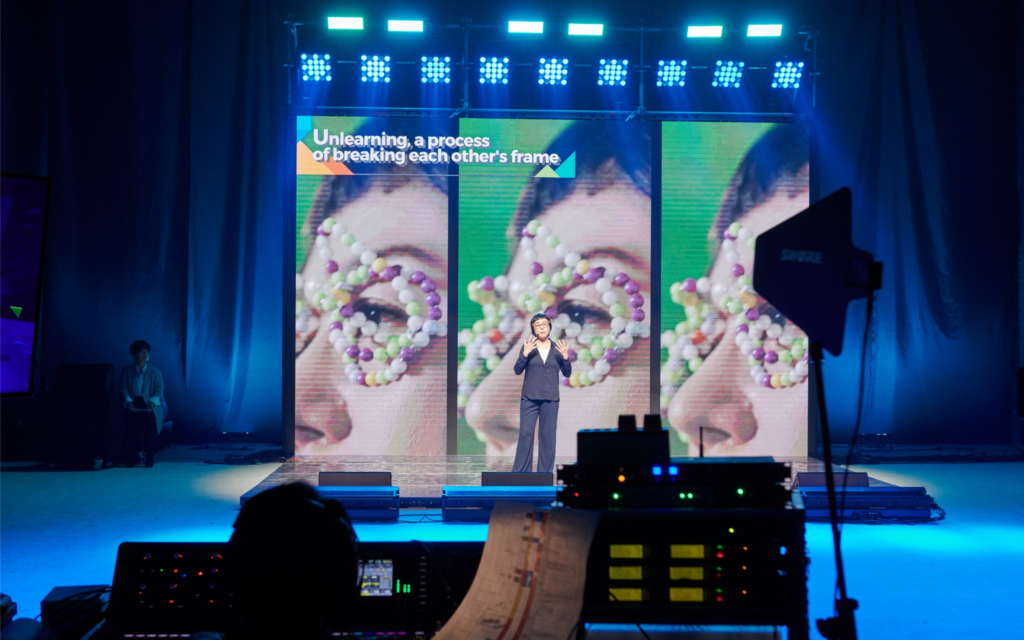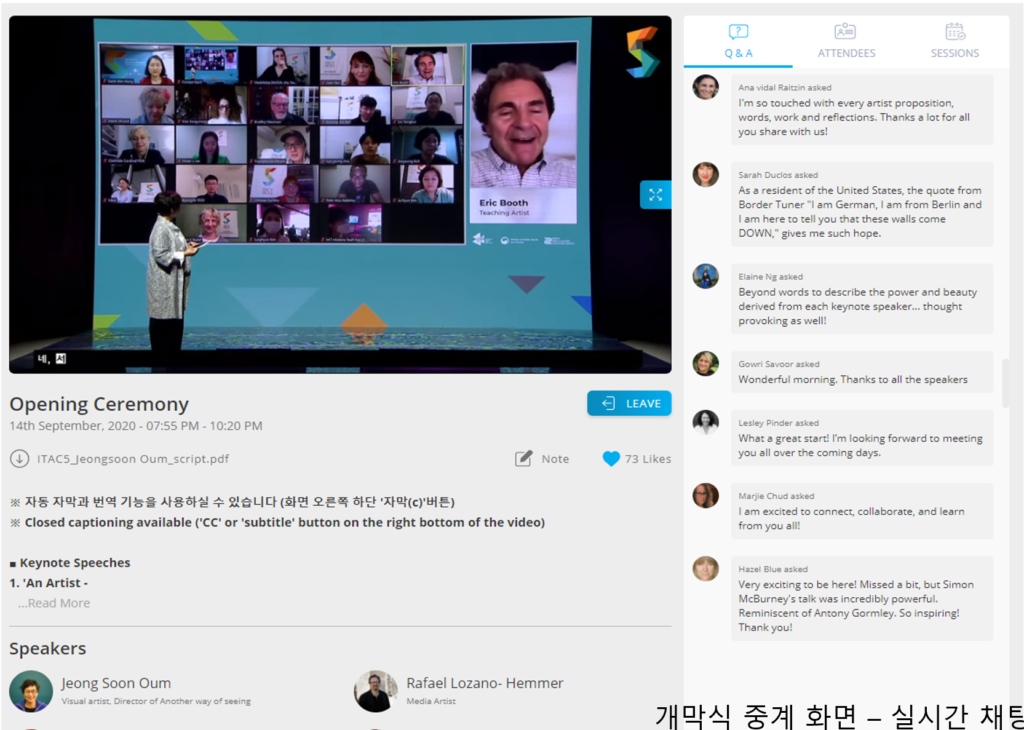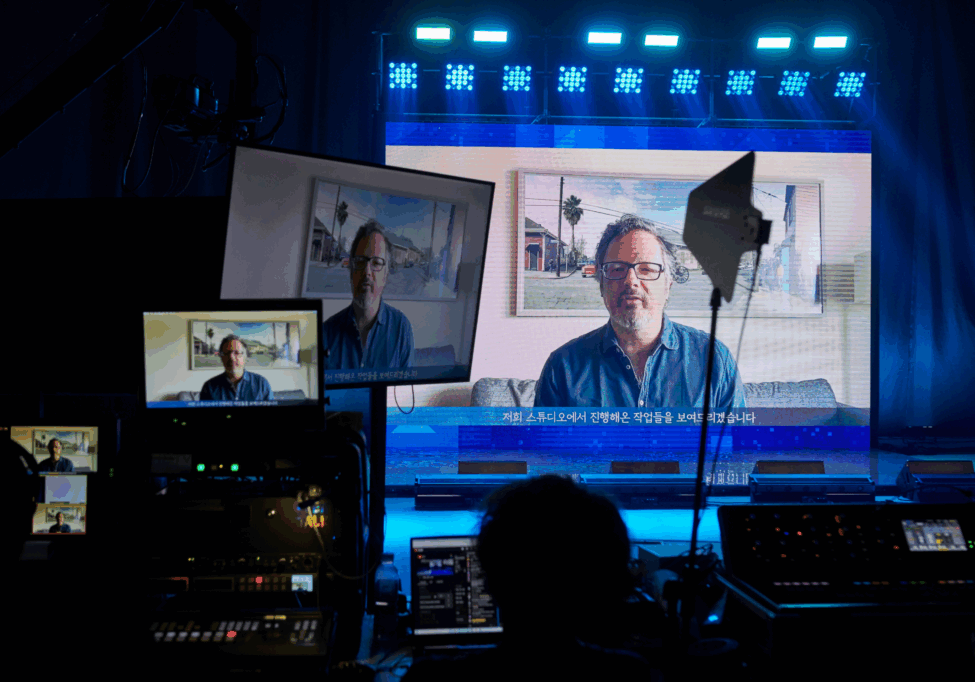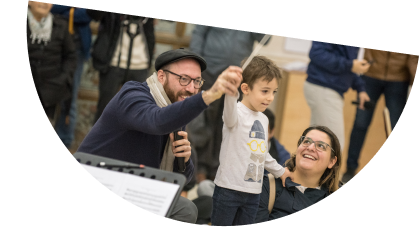The journey started when a mysterious package was delivered to my door. Containing a miniature pop-out Seoul and tea bags for between sessions, it was just one of the ways this year’s edition of the International Teaching Artists conference (ITAC) embraced COVID-19 limitations in an engaging and playful fashion. The conference itself took place in Seoul, South Korea, but as it was held online, people were able to join from all around the world.
Unlearning the conditioning of body and mind
The conference offered keynote digital speeches, zoom workshops, and even a ‘networking lounge’ where participants could choose armchairs to sit in and meet new people. It began with an online opening ceremony featuring appearances from the Korean Culture Minister, the ‘father of teaching artists’ Eric Booth, and key artists from around the world including Jeong Soon Oum, Rafael Lozano-Hemmer, Rosalie Zerrudo and Simon McBurney, all of whom wished us a ‘Good evening, good morning and good afternoon’ and reflected on the socially engaged function of the arts, more important than ever before. Artist Sun Sun Pak presented a live performance of a soundscape created with artificial intelligence, which enabled us to experience the lights and the pace of Seoul from the comfort of our living rooms.

The theme of the first day of the conference was ‘unlearning’, exemplified by the keynote artist Wolsik Kim, who spoke of the artist as someone who questions and thereby ‘unlearns’ the total conditioning on body and mind. This concept has influenced different areas of Kim’s work, including projects with people with disabilities and auditory hallucinations that interprets their experiences directly onto the stage. Particularly poignant were his reflections on the path of ‘learning’ and ‘unlearning’ in relation to his baby daughter as she began to use movement to explore and possess the world as well as inhabit it.
Practice that translates across space and time
On the second day, we explored Local and Nomadic practices, or practices that involve local communities but also translate across space and time. Cloudberry Mclean held a very insightful session on “Activism and Where the Possibility of Power Lies” through the work of her radically political artist charity Arika, one of the Turner bursary winners this year. Arika works with different communities including refugees and sex workers, supporting the part of those communities who have an active stance against the part of them that is oppressed. In this session, we were invited to reflect on what we do and do not have power over, and how to balance the task of giving artists and communities what they need to create high quality work — which could include community development and pastoral care, with the pressures of delivering a public programme in our product-oriented society.

Developing the topic of ‘local’ and ‘nomadic’, Eric Booth led an inspirational session on encouraging artists to act outside their artistic silo, in fields where their work can have even more impact, such as healthcare, government and business. He acknowledges that this is hard work where we encounter people who are not already ‘on our side’ and who may resist the language of art as “fluffy” or “emotional.” Yet it is also the area where we can make a significant impact, if we are willing to set aside the conventional language of art to find ways to encourage greater creativity and human connection — which of course is absolutely the essence of art.
Exploring, framing and observing the world
The third day was about peace and reconciliation. Simon Sharkey’s innovative project Jump works with groups in Jamaica and Scotland to explore the journey from boyhood to manhood through parkour and hip hop storytelling. Jieun Park’s ’story for coexistence, not for help’ looked at the way photography education could develop skills for students with disabilities by encouraging them to get interested in the world and start exploring, framing and observing their environment, expressing their findings visually, and then reinterpreting their images through a process of sharing with others.
Overall this was an incredibly inspiring four days which gave participants the chance to share practice around the world, and reflect on how it is possible to use the power of art to ‘unlearn’ what doesn’t serve us, and move towards a new future.


